What’s the Problem?
For too many B2B SaaS companies, marketing is an afterthought. Even with strong fundamentals — high net retention, healthy payback periods, and solid close rates — marketing budgets remain thin, teams are underbuilt, and pipeline contribution lags. The result? Stunted growth and lower valuations.
This is a strategic blind spot — and one that costs millions in enterprise value.
Why It Matters Now
Private equity-backed, VC-funded, and even mature bootstrapped companies are reaching growth ceilings not because their products are broken, but because their go-to-market machines are misfiring. With AI accelerating commoditization and investors increasingly focused on efficiency and ROI, companies that can’t prove the marketing machine drives value will get left behind.
Shiv Narayanan, Founder & CEO of How To SaaS and author of Exit-Ready Marketing, has seen this across hundreds of growth-stage companies. At SaaSiest 2025, he shared a framework to turn marketing into a valuation lever — one rooted in data, segmentation, and precision.
“If your payback is healthy and your retention is strong, you’re probably underinvesting in marketing — and leaving enterprise value on the table.”
Shiv’s Framework: How to Build a Marketing Machine That Drives Enterprise Value
1. Benchmark Your Marketing Maturity
Most companies score high on performance metrics — but low on marketing contribution.
Shiv suggests plotting your company on a simple 2×2 maturity grid:
- X-axis: Marketing investment
- Y-axis: % of pipeline generated by marketing
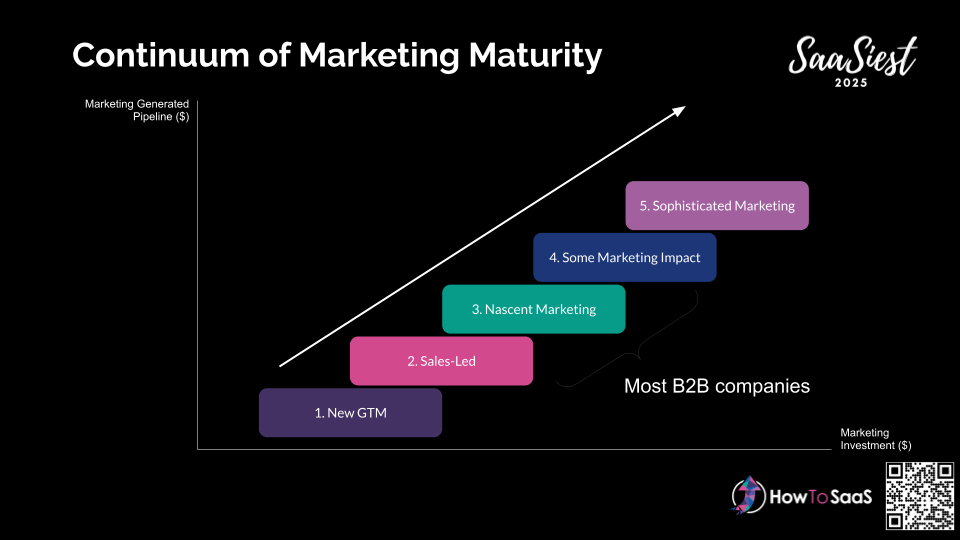
Many scale-ups live in the bottom left — limited investment, limited results. Yet their NRR, payback, and close rates say they should be in the top right.
Start here:
- Audit your net revenue retention
- Measure your marketing-generated pipeline
- Evaluate marketing headcount vs. revenue
If you’re generating less than 15% of your pipeline from marketing and only have 3–5 team members, you’re not alone — but you are underleveraged.
If you’re generating less than 25–30% of pipeline from marketing, and your payback is under 12 months, it’s time to invest more aggressively.
Shiv recommends grading your CAC payback, LTV, NRR, and close rates to determine readiness. If you’re hitting <12 months CAC payback and >100% NRR, you’re leaving enterprise value untapped.
A $1 spend in marketing today could translate to nearly $9 in enterprise value in 7 years, based on standard revenue multiples.
2. Refine Product Marketing Around Segments That Convert
Most companies look and sound the same. Why? Because they market to everyone with the same messaging.
Instead, Shiv recommends defining your ICPs by:
- Industry
- Persona
- Geography
- Deal size
Then craft differentiated messaging and distribute it across:
- Website
- Sales enablement
- Events
- Paid media
- Nurture programs
Key insight:
If your product performs best in a specific segment (e.g. project management for architecture firms), then all your go-to-market resources should reflect that. That’s where your highest win rates, best retention, and lowest CAC live.
“You’re likely spending just as much budget on poor-fit customers as on your best-fit ICPs.”
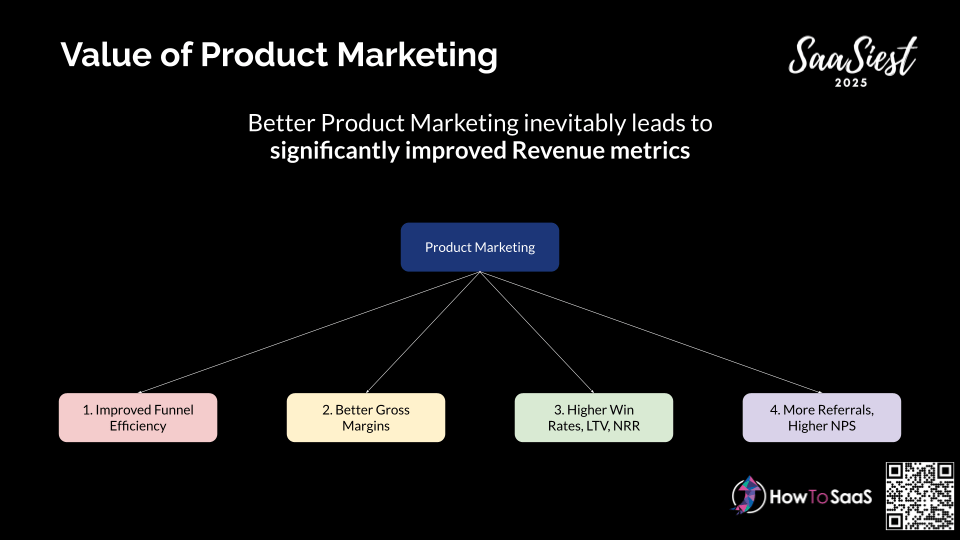
3. Align GTM Strategy with Deal Size
Your average deal size should determine your entire go-to-market motion. Shiv offered a matrix:
| Deal Size | TAM | Best GTM Focus |
| <$10K | Broad | Paid search, SEO, inbound |
| $50–100K | Mid | Outbound, content, ABM light |
| $250K+ | Narrow | ABM, partner marketing, sales enablement |
Too often, teams with $500K+ deals are investing in SEO. Shiv’s message: that money is better spent on ABM and channel partnerships.
Ask yourself:
- Where are we overspending relative to deal size?
- Are our most expensive resources focused on the right accounts?
- Are we customizing our message enough for high-value segments?
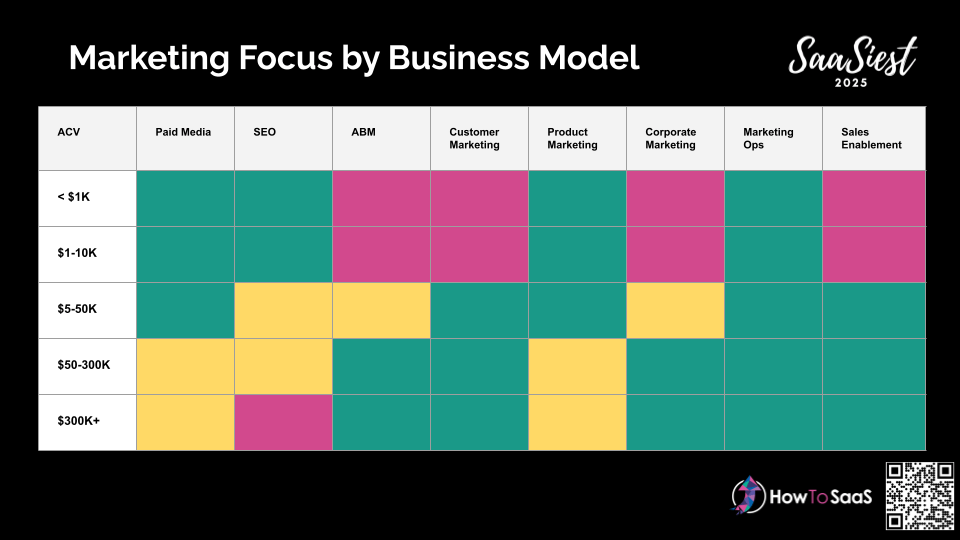
4. Recalibrate Demand Gen Using Funnel Math
Before scaling, Shiv urges teams to audit every channel:
- How many MQLs → SQLs → Opportunities → Closed deals?
- What’s your cost per opportunity (CPO) by channel?
- Which channels are scalable vs. capped?
Shiv shared multiple case studies where:
- Events were overfunded despite weak ROI
- Paid media was underfunded despite being highly efficient

What to do:
- Cut low-efficiency channels (e.g. vanity PR, low-ROI sponsorships)
- Scale channels where cost per opportunity is healthy
- Layer new initiatives based on readiness-to-buy (starting with buyers in-market)
5. Build Content Around Funnel Gaps, Not Hype
Content shouldn’t be driven by internal requests or hype trends.
Instead, Shiv recommends using content to fix:
- MQL-to-SQL drop-offs → improve nurture content
- SQL-to-close friction → enablement assets
- High churn → customer success and onboarding assets
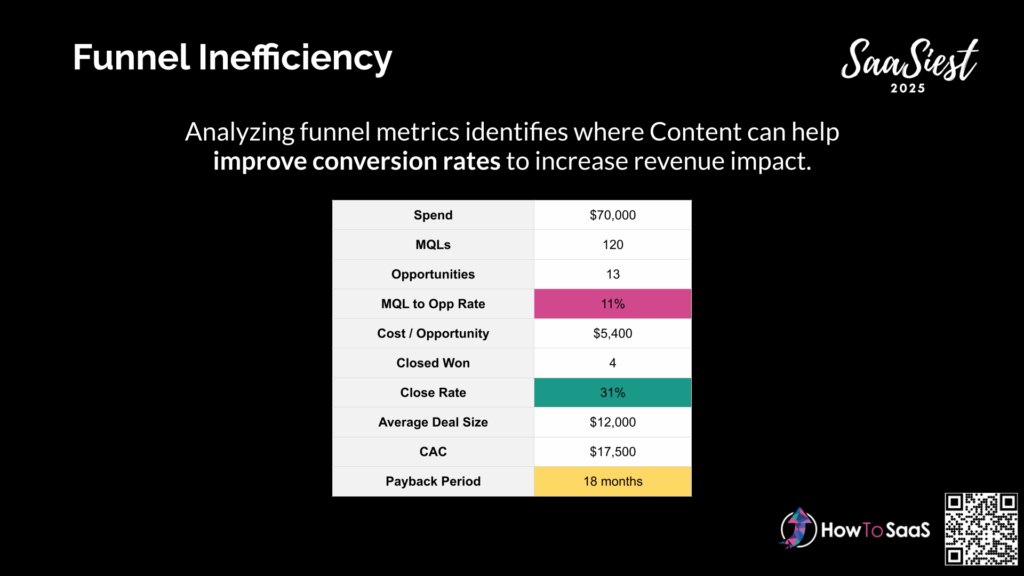
Prioritize content for:
- Buyers ready to convert (bottom funnel)
- Common objections and proof gaps
- Sales acceleration, not just top-funnel education
“Too many companies are launching podcasts before fixing their website or nurture sequences.”
6. Audit Your Team and Budget
Most teams don’t have the people to execute the strategy Shiv outlines. The solution is two-fold:
- Audit current talent against growth targets
- Build a hiring roadmap that supports funnel goals
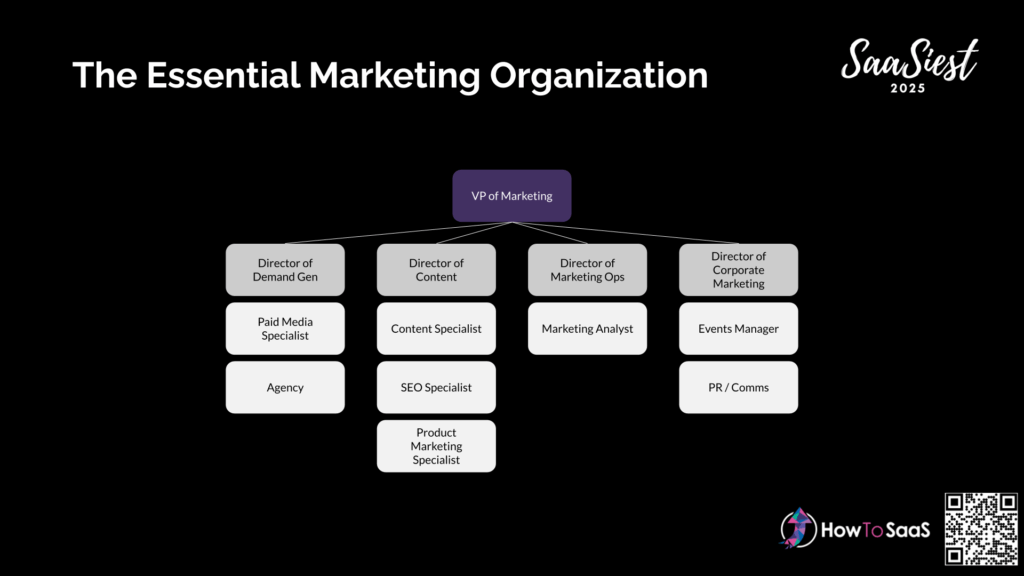
Then do the same with budget:
- Start with your bookings target (e.g. $10M ARR)
- Calculate backwards: how many opps → how many leads → how much spend
- Reallocate funds based on what’s working and what’s not
If your board or CEO doesn’t understand how marketing drives these numbers, that’s a signal your team needs to build the reporting muscle.
Do This Right, and Here’s What Happens
- Marketing generates 30–50% of pipeline
- Valuation multiples increase (due to proven, scalable GTM)
- Teams get budget and headcount to execute with confidence
- Marketing earns its seat at the strategy table
This is the difference between marketing as a cost center and marketing as a value engine.
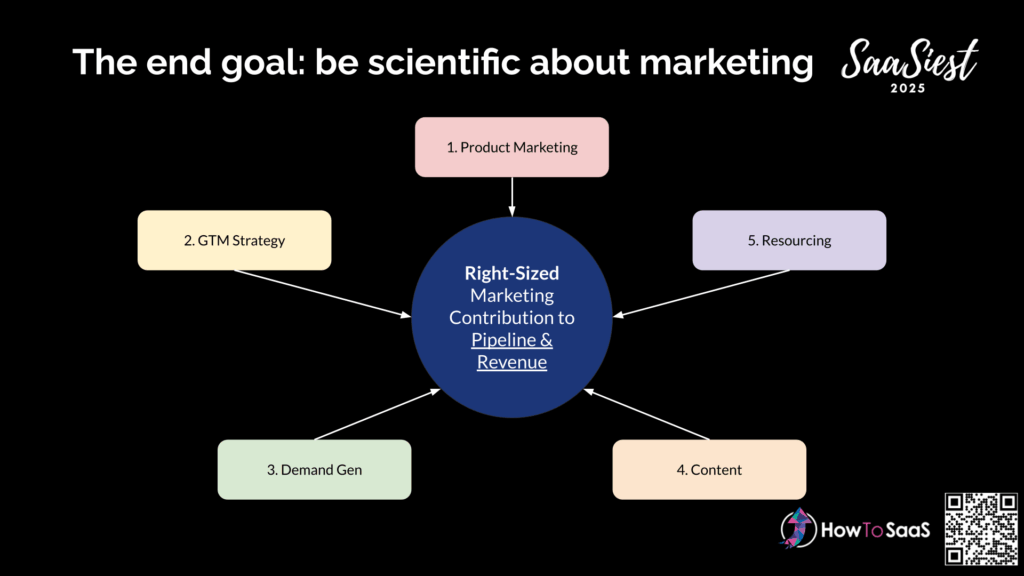
Final Takeaway
Marketing deserves more — but it has to earn it. Shiv’s final advice?
“Become more data driven. Speak the language of investors. Tie everything you do to business results.”
The companies that do this will grow faster, exit bigger, and leave their competitors behind.
Check out Shiv’s keynote session at SaaSiest 2025 here




